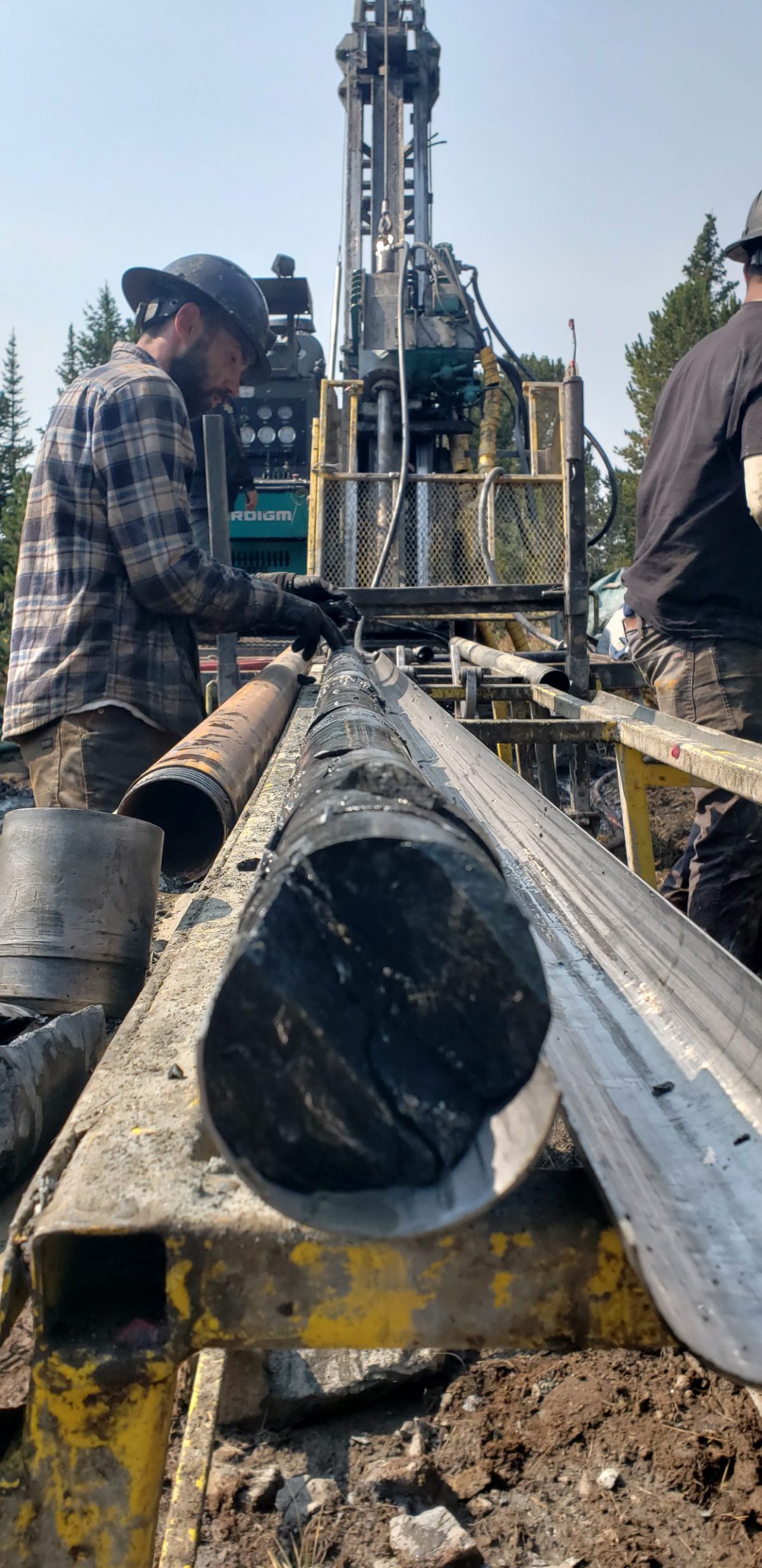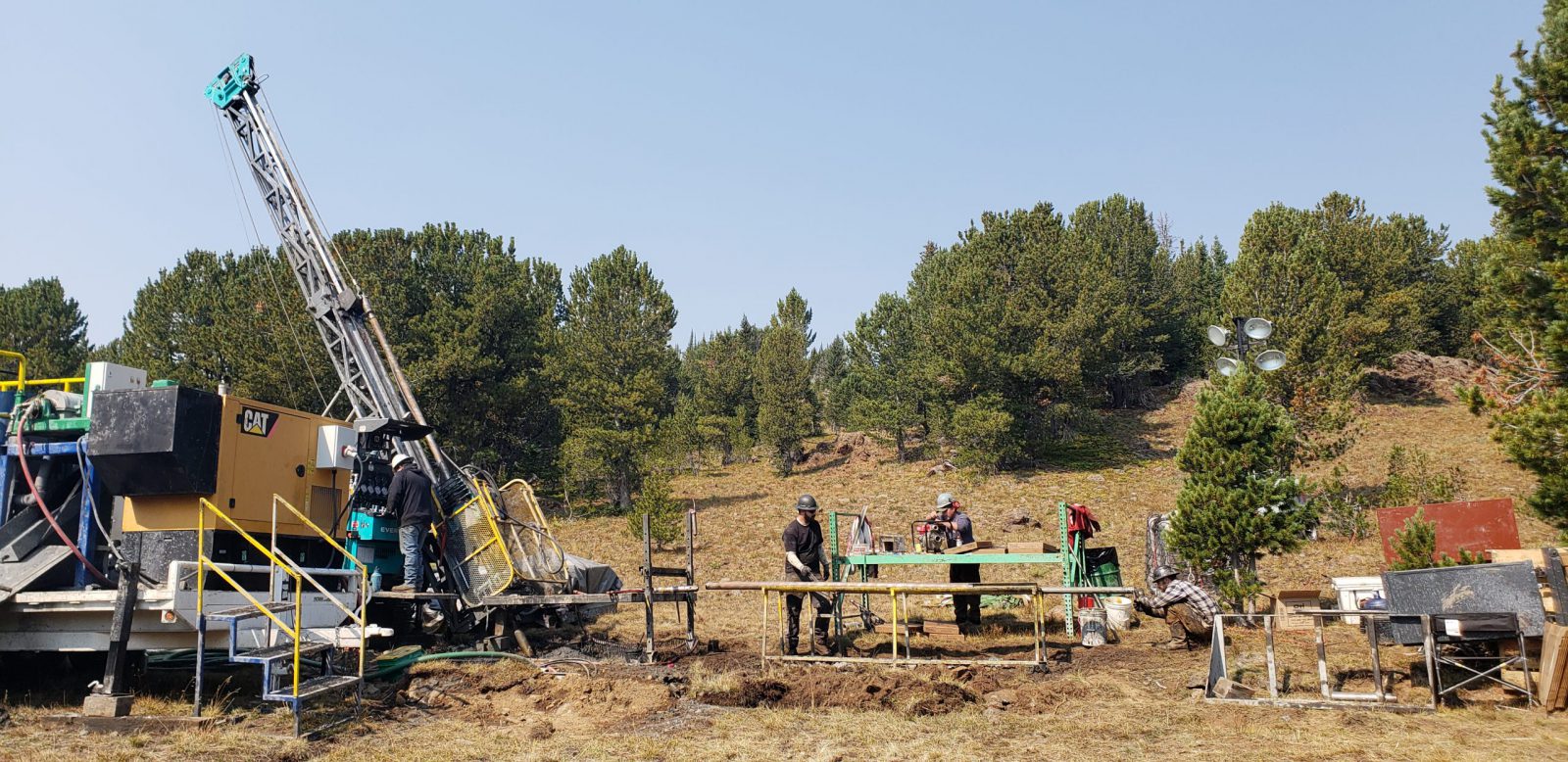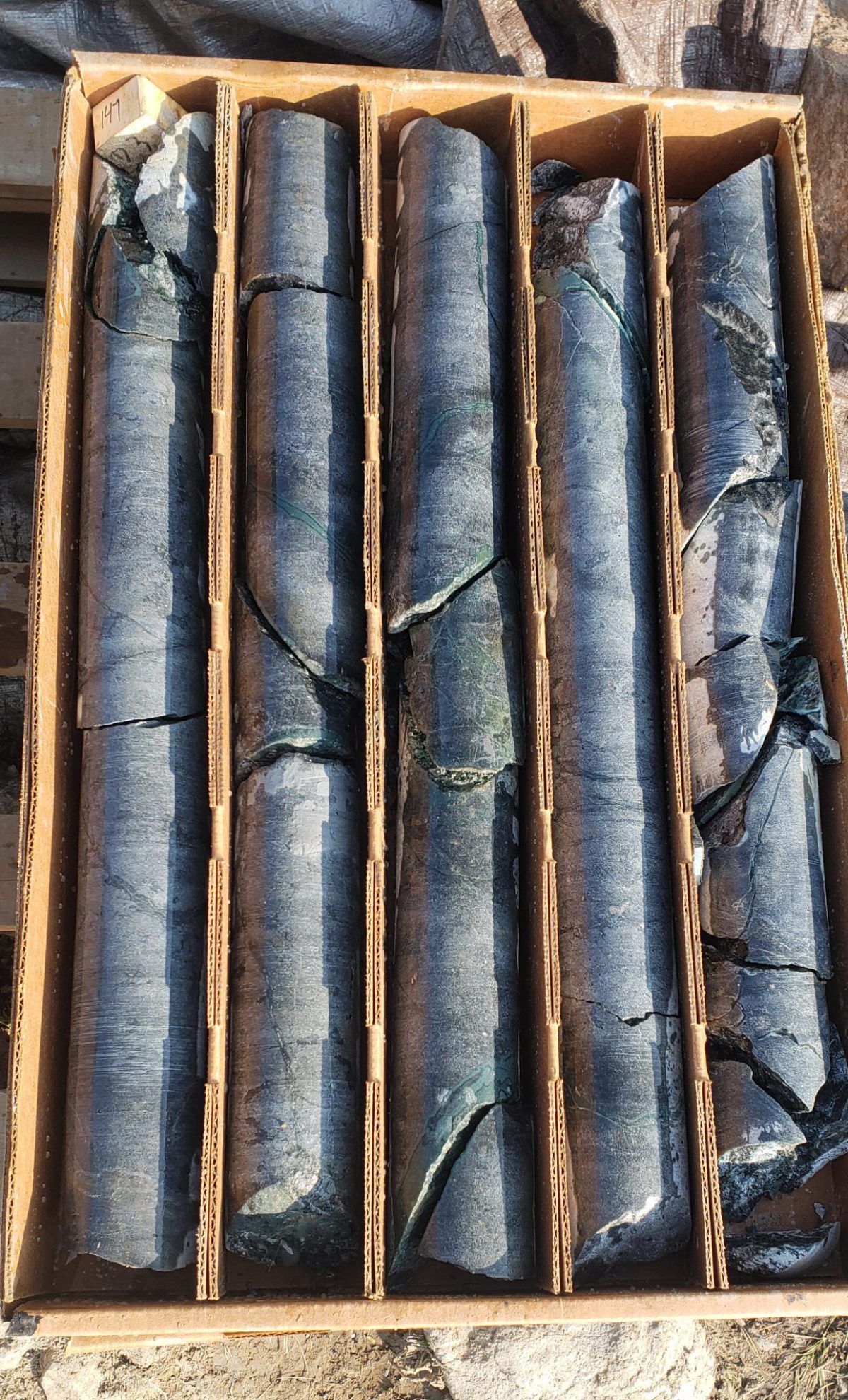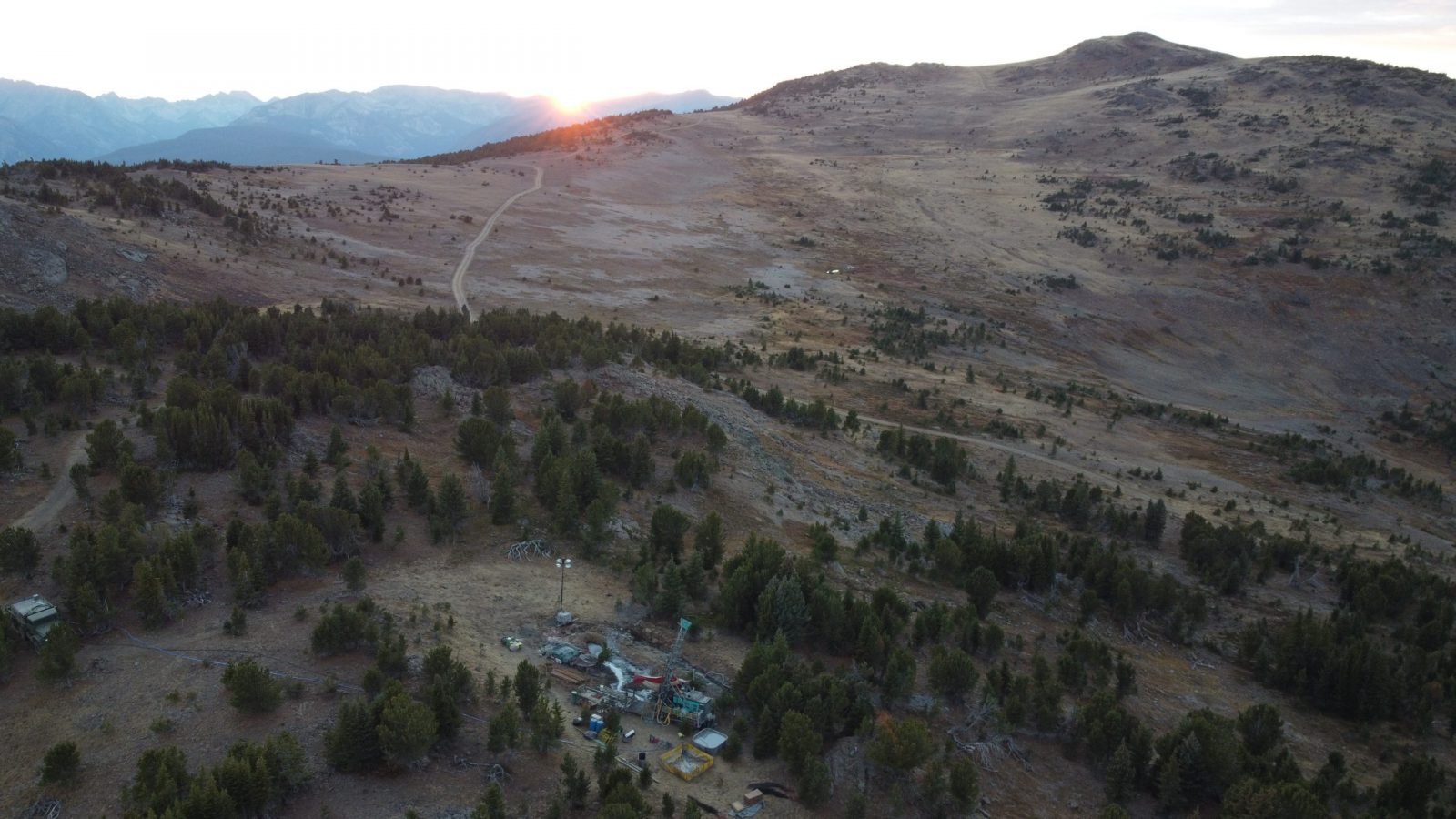Group Ten Metals breaks new ground in the search for battery and platinum group metals
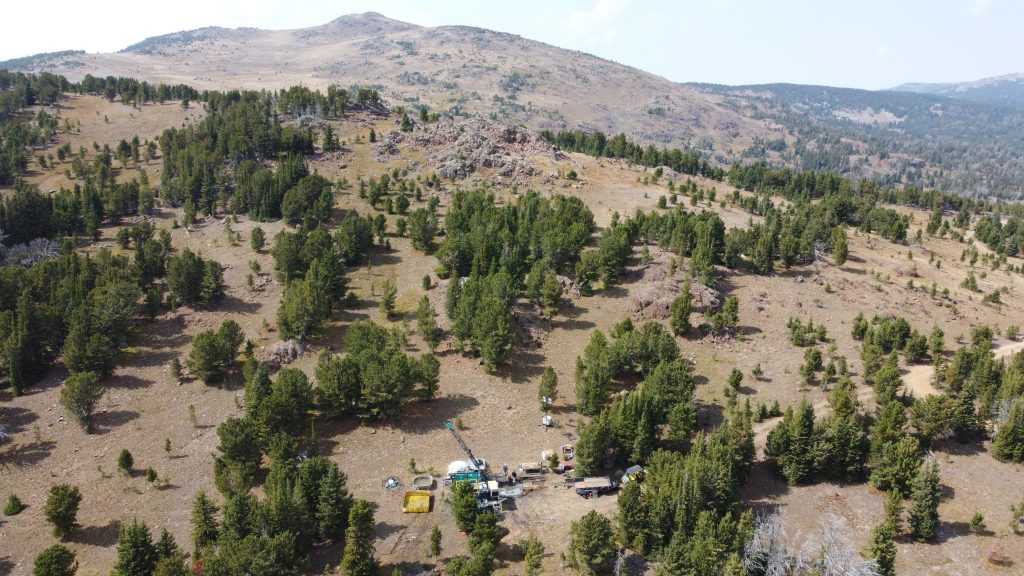
Group Ten Metals Inc. [TSX.V: PGE / OTCQB: PGEZF] are on pins and needles. They’re eagerly awaiting assays from the recent resource expansion drill program from the lab. If the results come back as expected, the 14 diamond drill holes could bust the company’s flagship Stillwater West PGE-Ni-Cu-Co +Au project in Montana wide open, pushing the mineral resource numbers towards elephant territory.
Their timing couldn’t be better. With clean technology industries surging at a blistering pace, demand for battery metals is expected to grow by almost 500 percent by 2040, making this an exciting time for PGMs, nickel, copper, and cobalt miners. And Group Ten Metals is building on this excitement as it blazes a trail across 61 square kilometers of mining claims in the Stillwater district of Montana, adjacent to North America’s largest PGM mines, the Stillwater and East Boulder mines operated by Sibanye-Stillwater Ltd (NYSE: SBSW, JSE: SSW), the only major PGM producer in the U.S. and the highest grade major PGM deposit in the world. In the hunt for new supply of these critical minerals, jurisdiction is a major consideration.
While Group Ten Metals is not as well-known as Sibanye-Stillwater Ltd, the leadership team has leveraged years of deep experience in finance, mineral exploration, and mine building to start putting the company on the map. Group Ten is part of the Metallic Group of Companies, a collaboration of independent exploration companies that formed in the depths of the recent bear market with a cooperative strategy that has enabled them to leverage a very deep bench of technical and business expertise. The three member companies – Group Ten, Metallic Minerals, and Granite Creek Copper – are focused on different commodities but, in keeping with their collective philosophy, each hold district-scale assets in prime North American mining jurisdictions with top in class producers next door.
Group Ten’s Executive Chairman, Greg Johnson, is CEO of Metallic Minerals which was established in 2016 as the first Metallic Group member. With a track record of exploration success, Johnson was a co-founder of NovaGold and instrumental in discovering the massive Donlin Creek gold deposit in Alaska and, in fact, a significant component of the Metallic Group’s technical prowess comes from Nova alums.
Michael Rowley, Group Ten’s President, and CEO is one of the founding shareholders and directors of the company and has 25 years of executive experience in the mineral exploration, mineral testing, and the mining environmental industries.
Rowley, who was impressed by how Ross Beatty was buying up silver properties in the 1990s at the bottom of that bear market, set out to build a portfolio of early-stage regional-scale mineral exploration properties at the bottom of the bear market in 2015-17. It was a similar strategy to the early days of NovaGold under Johnson, and that of Metallic Minerals in 2016 when they were able to secure the eastern half of the Keno Hill silver district in Yukon.
“Things got started after I went to the Yukon with Bill Harris to assemble the Kluane PGE-Ni-Cu property to add to the Black Lake-Drayton Gold project we held in the Rainy River district of northwest Ontario. That what the beginning of the Metallic Group. The real turn in our luck came in 2017 when we acquired the Stillwater West project, which has gone on to become the main value driver for the company while the Kluane property has significant potential for partnerships and longer-term value realization,” says Rowley.
On November 29, 2021, Group Ten Metals signed a definitive agreement with Heritage Mining Ltd. by which Heritage may acquire up to 90% of the Black Lake-Drayton Gold project. “Heritage has a great team and we feel this is the first in what will ultimately become a series of deals whereby Group Ten begins to realize value for our non-core assets,” says Rowley.
The Focus is on the Stillwater West Project.
The Stillwater West project consists of 14 multi-kilometer-scale mineralized exploration target areas across a 32-kilometre strike length. Eight of these zones are prospective for Platreef-style deposits (very large-scale, disseminated nickel-copper sulphide deposits rich in PGMs akin to Ivanhoe’s South African project), while the other six have the potential to host reef-type deposits that are geologically like the J-M Reef deposit, now being mined by Sibanye-Stillwater at the Stillwater and East Bounder Mines.
Group Ten Metals announced the acquisition of Stillwater West while South African producer Sibanye was completing their takeover of Stillwater Mining company for US $2.2 billion. The deal positions Group Ten Metals as the second largest landholder in the district. In addition to the land package, the Stillwater West acquisition included an extensive historic database of soil and rock geochemistry, geophysical surveys, geologic mapping, and historic drilling with nearly 12,000 metres of preserved core.
The value of the database can’t be understated. Group Ten’s systematic approach in bringing together past surveys (geophysical, geochemical, and geological), plus data from over 28,000 meters of past drill data have allowed them to move quickly in advancing drill-defined mineralized zones based on new exploration targets in the most advanced areas. More importantly, Group Ten has been able to complete their initial 43-101 resource estimate calculated from a total of 83 drill holes, including 11 drilled by the company in 2019 and 2020. The remaining 133 historic holes serve to guide the expansion effort across the project. Assays are pending from a further 14 holes drilled in 2021 with a focus on expanding the inaugural mineral resources.
The maiden resource estimate announced in October 2021 was good news. The inferred mineral resources totaled 2.4 million ounces palladium, platinum, rhodium, and gold plus 1.1 billion pounds of nickel, copper, and cobalt within 157 million tonnes at an average grade of 0.45% total nickel equivalent (“NiEq”) (equal to 1.20 g/t palladium equivalent, or “PdEq”) using a 0.20% NiEq cut-off grade. While this is an exceptional debut, Rowley also points out that this initial resource consists of five deposits that have well-defined expansion potential within the core 9.2 kilometer area of the project which, in turn, is set within 32 highly prospective kilometers of lower Stillwater complex stratigraphy.
“The resource estimate provides a robust debut of high-demand battery and platinum group metals in a top US mining district. This is a major milestone in advancing both the project and Group Ten Metals. Mineralization in the five deposits shows excellent continuity and grade across large areas, with strong geophysical and geochemical signatures that remain open in all directions demonstrating excellent potential for expansion. Our 2021 drill campaign was focused on expanding these initial resources by stepping out from known mineralization into untested adjacent targets on a priority basis.” says Rowley.
Known parallels with South Africa’s Bushveld complex make the Stillwater West an even more exciting story. So far, Group Ten has focused their exploration activities on the Platreef-style deposit potential of the lower portion of the Stillwater West property based on the Company’s drill results, an extensive database, and known similarities between the Stillwater layered complex and the Bushveld complex. Group Ten’s work has now confirmed the “Platreef-in-Montana” deposit model with the delineation of multiple Platreef-style horizons along the 32-kilometer-long property. Given the attractive economics and commodity mix of the giant mines on the Platreef, and the expansion potential demonstrated by Stillwater West, this is a very exciting development for the company.
An important feature of Group Ten’s property is its proximity to the J-M Reef deposit and the Stillwater and East Boulder operations run by Sibanye-Stillwater. The Sibanye-Stillwater-owned deposit starts at surface with mining extending as deep as two km along the J-M Reef, a nickel-copper sulphide reef deposit that remains open at depth and along strike. Operations comprise shallow to intermediate depth underground PGM mines plus also a smelter-refinery complex that were acquired by Sibanye in 2017 when it acquired Stillwater Mining Co. in a US$2.2 billion transaction – the largest PGM-focused mining acquisition globally in over a decade. Both mines feed ore from the prolific J-M Reef deposit, which is the highest-grade major PGM deposit in the world, the largest PGM deposit outside of Africa and Russia by a wide margin, and the only significant source of PGMs in the U.S.
From the Geological Perspective
The Stillwater Complex, which is in the northern Beartooth Mountains of southern Montana, is a large, layered igneous intrusive system. The Stillwater Complex is subdivided into three major series: from bottom to top, these are the Basal Series, the Ultramafic Series, and the Banded Series. Each series is subdivided into distinctive stratigraphic units (the Lower Banded Series, Middle Banded Series, and Upper Banded Series).
The J-M Reef deposit, now being mined by Sibanye-Stillwater’s Stillwater and East Boulder Mines, sits in the Lower Banded Series. The J-M Reef is a PGM stratiform magmatic “reef-type” deposit, which is geologically like the Merensky Reef of the Bushveld Igneous Complex in South Africa, which hosts most of the world’s known PGM reserves. Both deposits are hosted by mafic / ultramafic-layered intrusives that are considered to have similar geological origins. Stillwater West is located below the J-M Reef deposit in the layered stratigraphy of the Stillwater Igneous Complex, in a parallel location to the Platreef’s setting below the Merensky Reef in the Bushveld Igneous Complex.
At Stillwater West, Group Ten’s primary focus is Platreef-style mineralization that occurs as nickel and copper sulphides with PGEs, gold, and cobalt in both the Basal and Ultramafic series, particularly in the peridotite zone. Mineralization consists of broad zones of magmatic sulfide mineralization up to 400 meters in thickness hosted by olivine rich cumulate rocks and associated rafts of xenoliths of country rock, including iron formation and hornfels with textures that range from disseminated to net textured to semi-massive and massive sulphides. PGE-Ni-Cu-Co+Au mineralization is also associated with disseminated chromite, pegmatoidal textures, and complex magmatic breccia textures.
Group Ten’s work is also advancing reef-type, PGE-rich chromite, and high-grade gold mineralization across the property.
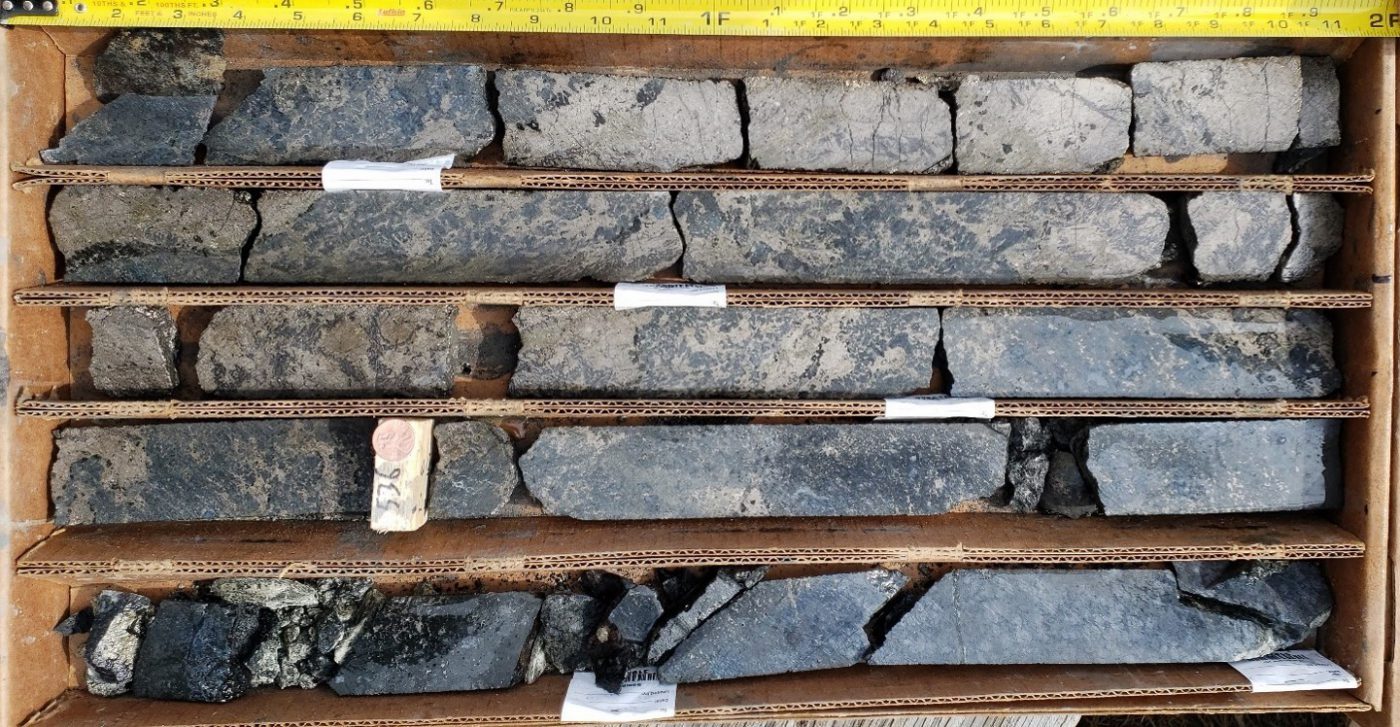 PGM mineralization at the J-M Reef occurs in association with a relatively thin horizon of copper-nickel sulphides. PGM concentration is believed to be the result of magmatic processes that created immiscible sulphide droplets that interacted with the magma, concentrating PGMs along with copper, nickel and iron into a high-grade zone comprising the J-M Reef. The J-M Reef shows a high degree of variability in grades and thickness and has PGM grades that are significantly higher than the Merensky Reef. Like all reef-type deposits, the J-M Reef is narrow, ranging from 0.9 meters to 2.7 meters thick and averaging 1.8 meters. In the extreme, keel-shaped zones can form that transgress the footwall mafic rocks, commonly reaching thicknesses of six meters and greater. There is no correlation of thickness to grade, so as these sulphide zones thicken, they can maintain grade and become an important source of metal.
PGM mineralization at the J-M Reef occurs in association with a relatively thin horizon of copper-nickel sulphides. PGM concentration is believed to be the result of magmatic processes that created immiscible sulphide droplets that interacted with the magma, concentrating PGMs along with copper, nickel and iron into a high-grade zone comprising the J-M Reef. The J-M Reef shows a high degree of variability in grades and thickness and has PGM grades that are significantly higher than the Merensky Reef. Like all reef-type deposits, the J-M Reef is narrow, ranging from 0.9 meters to 2.7 meters thick and averaging 1.8 meters. In the extreme, keel-shaped zones can form that transgress the footwall mafic rocks, commonly reaching thicknesses of six meters and greater. There is no correlation of thickness to grade, so as these sulphide zones thicken, they can maintain grade and become an important source of metal.
Palladium and platinum are the main PGMs, with palladium being the more significant of the two. It is currently believed that the in situ Pd: Pt ratio is 3.4:1 to 3.6:1 within the J-M Reef. Other associated PGMs (rhodium, iridium, ruthenium, osmium) and gold also occur, though in low concentrations. The J-M Reef contains approximately 0.25- 3% visible disseminated copper-nickel sulphide minerals, predominantly chalcopyrite, pyrrhotite, and pentlandite, with microscopic PGM minerals and platinum-iron alloys. Copper, nickel, gold, silver, rhodium, and the lesser PGMs iridium, osmium, and ruthenium are by-products of production fed from the J-M Reef deposit.
Critical Metals to Fuel the Innovation Economy
The global economy could be on the brink of a new commodity super cycle as governments prepare to use a green industrial revolution to kickstart growth following the coronavirus pandemic.
The price of commodities, such as energy and metals, have reached record highs in recent weeks despite the ongoing spread of Covid-19 and are expected to climb further as countries embark on plans for a green economic recovery.
Market experts, including US bank Goldman Sachs, believe the boom could echo the last super cycle in the early 2000s led by the sharp growth of emerging BRIC economies, and this is all good news for companies like Group Ten Metals.
“Five of our main commodities are considered critical minerals in the US that are important to the United States economy and are key components of the innovation economy. The assured supply of critical minerals mined in the US is important for the resiliency of the US supply chain and essential to the economic prosperity and national defense of the United States,” says Rowley.
Demand for nickel is expected to rise by five times by the end of the decade, while demand for cobalt is expected to rise by 45% by 2025. Platinum demand is also expected to continue to rise because it’s the preferred catalyst to produce ‘green hydrogen’ from water, and for the consumption of hydrogen in fuel cells. Palladium has shown continued year on year demand as stricter emissions standards are adopted globally, especially in China where new standards match those of most Western Nations.
It’s no wonder then the management team at Group Ten Metals are pacing the floor waiting for the drill results from the lab. There’s a lot at stake. With more good drill results, the favourable geology, being US-based, and predictions for an energy metals super-cycle, Group Ten Metals in a good place to become the next major US-based source for battery and PGM metals.
The Last Word
“I think people are starting to understand the value that we’re bringing by being one of those rare projects with all these critical metals in one place. A lot of our peers are nickel, or PGE, only. We really are both. Our best comparables are in the Platreef in South Africa and I think the market is just starting to understand our story. The next phase of our story is the growth potential, and we think we’ve got a good handle on that.” says Rowley.

